Star Ferry Musing #65: Toilet Tales
Written by Robert Wu for his family and friends
To read all the articles, please visit http://www.starferrymusings.com/
——————————————————————————————-
During our travels, we need to use toilets. Like most people, we feel most comfortable in our own toilets at home. Then we prefer in descending order the ones in our hotel rooms, restaurants, highway modern rest stops, and the least, public toilets. This is not the most genteel topic to write about, but it’s a fact of life and cultures.
When we visited a Nevada desert ghost town, Sally walked past an ornate, old outhouse. After a century of cleansing by sand-laden wind, it was dry and tidy, but precariously propped up by a log.
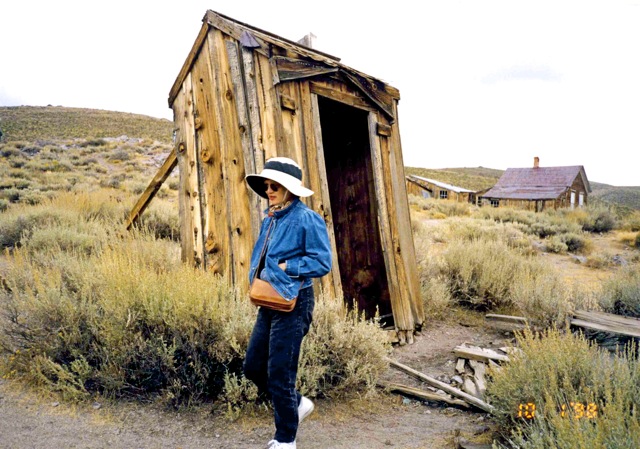
(Robert Wu)
A farm in Kenya has an outhouse on its property. It is exiled to a far corner of the property to keep its odor as faint as possible.
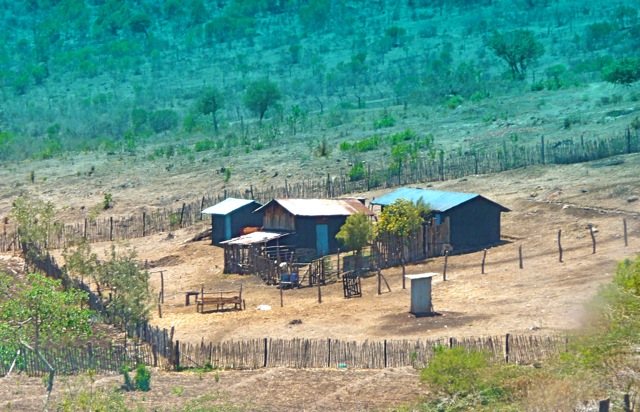
(Robert Wu)
In Myanmar (Burma), some houses sit on stilts over a lake. Their toilets drop wastes into a basket below in the lake to keep solid wastes from contaminating the lake. Twenty years ago, I saw similar toilets in China. They were little sheds that sit over fish ponds to recycle waste directly into protein.
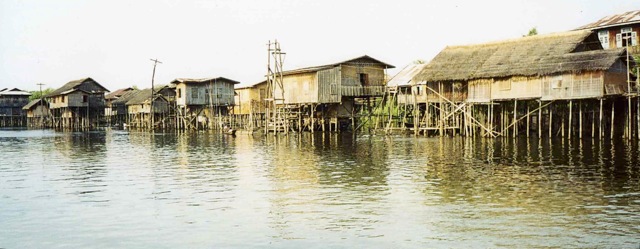
(Robert Wu)
When we were in the Kenya savanna, there was no toilet in sight. Everybody got out of the van and separated into groups of men and women. First the men look to the front of the van while the women did their business behind the van. Then the people changed places and men did their business. The location was carefully chosen so no lions could sneak up on our group.
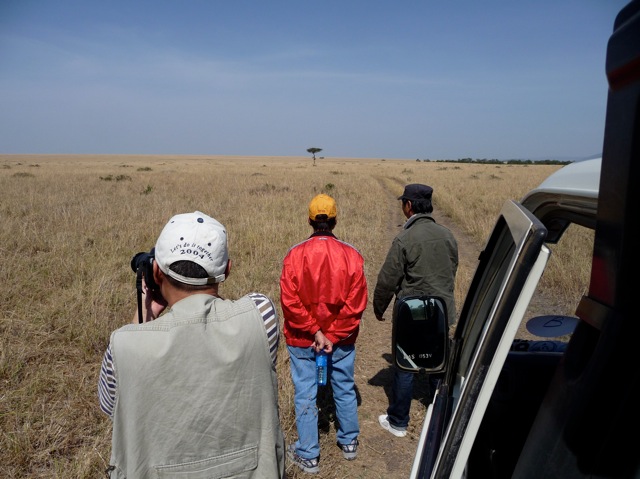
(Robert Wu)
The royalty in imperial China was pampered. They used toilet seat cushioned in silk and a bucket filled with feather. After they did their business, eunuchs would clean their bodies up, remove the bucket and dispose the content.
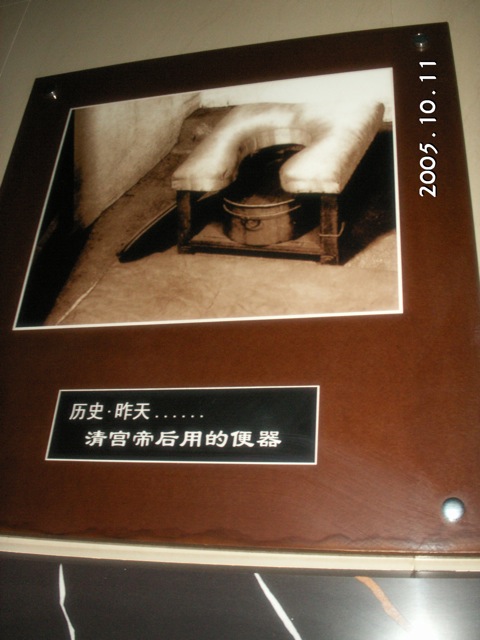
(Robert Wu)
Medieval European aristocrats lived in castles surrounded by moats. Their toilets had chutes that slid the wastes out of the castle and dropped into the moats. This relic of a castle in Colchester, England, shows two toilet chutes. The commoners who lived in towns used chamber pots in their bedrooms and poured the content out the windows into the streets. If you ever wondered why medieval Europeans wore capes that covered them from head to toes, now you understand why.
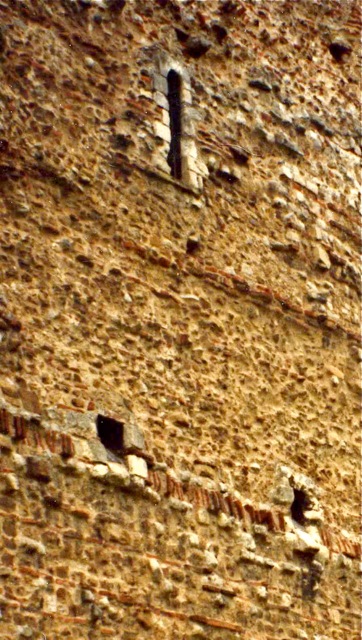
(Robert Wu)
Indian aristocrats enjoyed indoor toilets. This is a toilet in the palace in Amber Fort, India, and has wash basins next to the slots. But even in a palace, there was no privacy as two people would use the toilet a the same time.
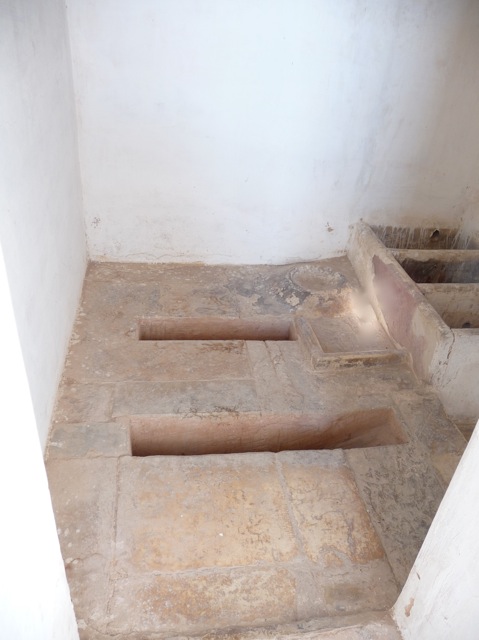
(Robert Wu)
Romans, 2,000 years ago, were great civil engineers and their towns were technical marvels. This is a terra cotta water pipe found in Jordan. The oldest city-wide sewage systems were built in the Indus River area 4,500 years ago in today’s Pakistan.
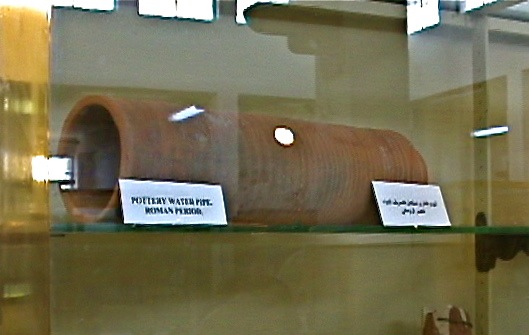
(Robert Wu)
Many people refrain from visiting China for fear of its public toilets. Many rural toilets are still simple holes in the ground and a slot over the pit. Public toilets were fearsome places to visit, and tourist would use them only as the last resort. These women going to the toilet at a gas station 20 years ago probably felt like walking to their execution.
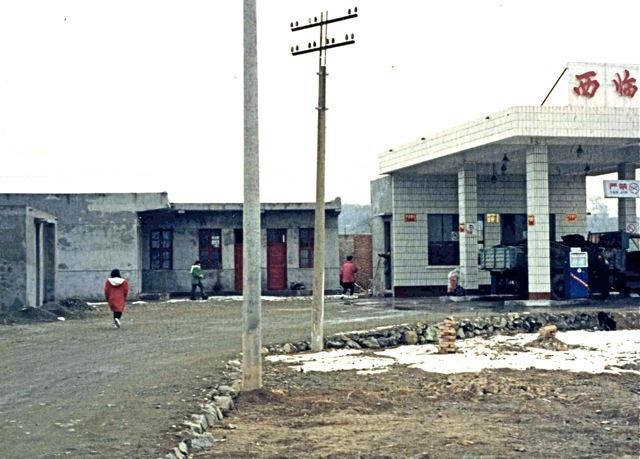
(Robert Wu)
The public toilets composed of one open trench, separated by low walls and no doors. The trench would be flushed once in awhile, so deposits by earlier users are plain to see. Once I saw a bus-load of Chinese passengers mobbed a gas station toilet. Apparently they were on a tight schedule and had to hurry. Two men would crowd into one cubicle, squat down and do their business together. It’s incredible how adaptable human can be.
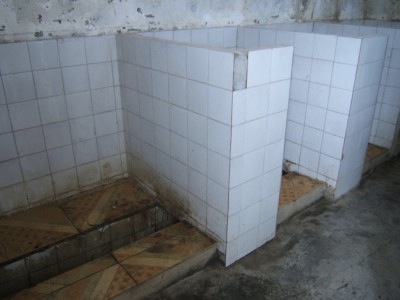
(From web)
City public toilets are still generally chambers of horror. This one is by a dump, and was obviously constructed by illiterate migrant workers (民工). The character for toilet ( 厠) was stenciled in reverse.
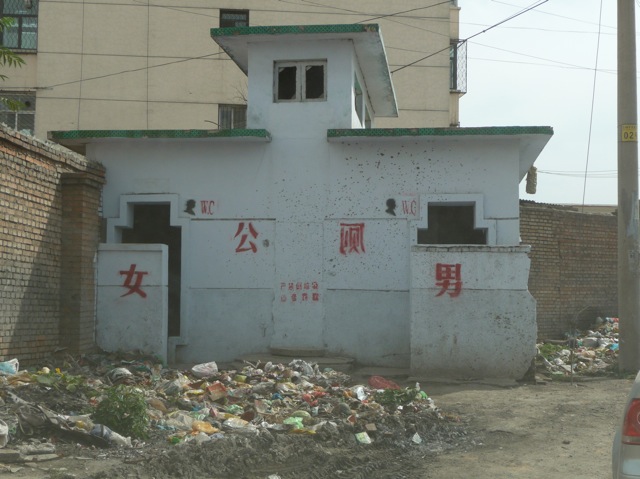
(Robert Wu)
Unappealing though Chinese public toilets are, at least there are public toilets for all people. India, by contrast, lack such public facilities and people take care of bodily functions in the open. By some estimates, 1/3 of India’s population have no access to toilets and have to utilize riverbanks, woods, beaches and fields.
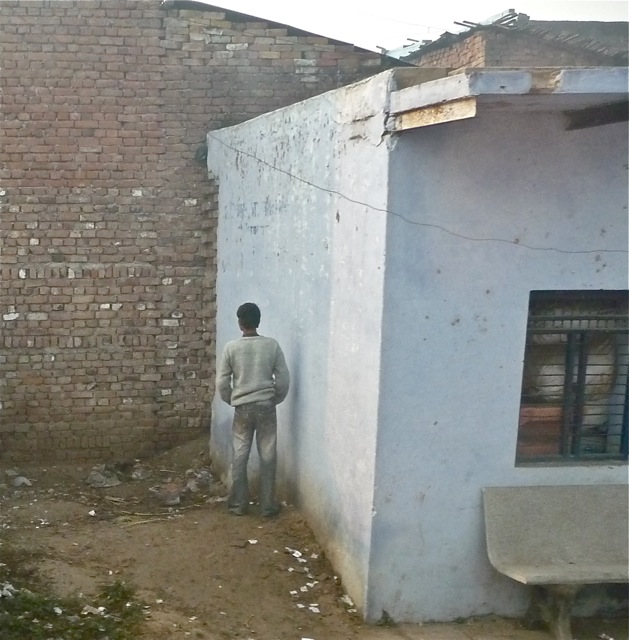
(Robert Wu)
A toilet was used as a symbol of Chinese hatred of Japanese invaders. This public toilet is named Yasukuni Shrine (靖國神社) which enshrines and deifies, in Tokyo, 2.5 million Japanese soldiers who died in battle since the Meiji Restoration. The Japanese believe that once enshrined in Yasukuni, a dead person’s evil deeds are absolved. The Chinese who suffered Japanese atrocities do not agree to such absolution since they feel the Japanese people have not atoned adequately for th misdeeds and periodically revive jingoistic rhetorics.
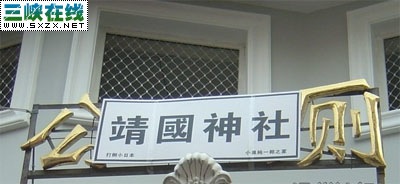
(From web)
The most horrible hotel toilet we encountered was on our road trip to Lhasa, Tibet. At the highest point (about 3 miles high) of the highway, Tanggula Pass (唐古拉山口), we slept overnight in a most rudimentary inn. It was the only inn available and probably cost $5 a room. This inn had public toilets in the hall, and none in the rooms. The toilets were indoor outhouses.
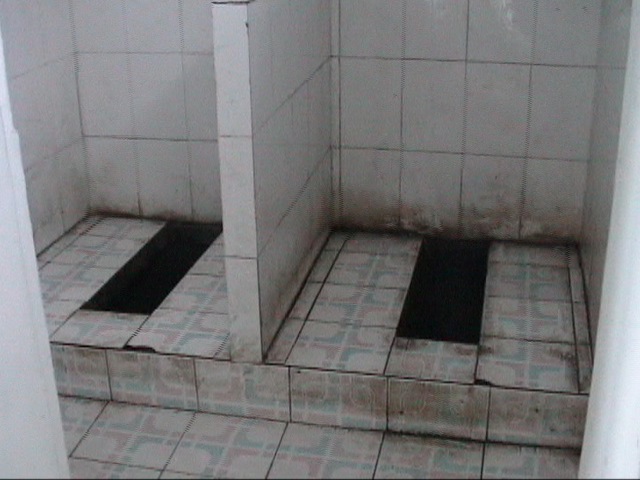
(Robert Wu)
Having been forewarned by the tour group leader, Sally bought a chamber pot to use in our room. We did not want to go to the indoor outhouse in the darkness of night and take the chance of falling through. We also brought our own sheets, sewn into sleeping bags, to sleep in. It was a night to be remembered, though not cherished.
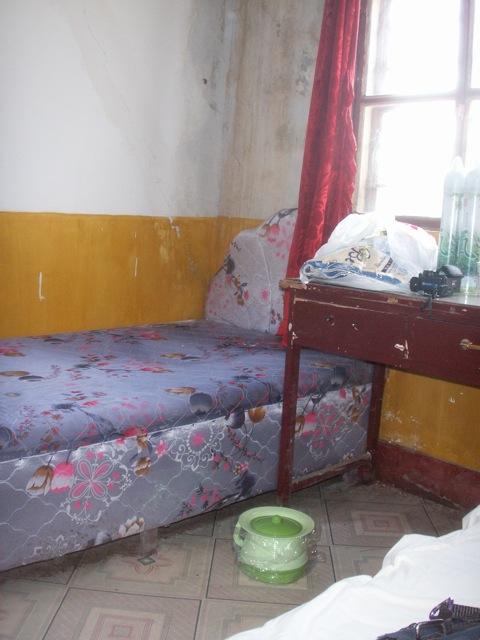
(Robert Wu)
On a mountainside meadow of XinJiang (新彊), there was a public toilet. Being a dry toilet, it was basically a building over pits. We chose to take our chances in the woods rather than in the toilet.
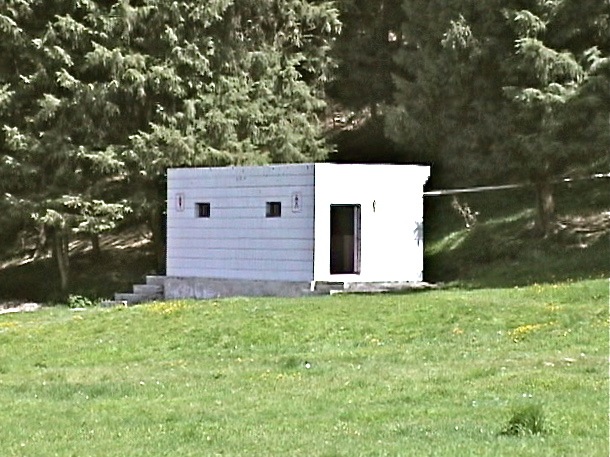
(Robert Wu)
In the empty desert in QingHai (青海), a solitary, nicely built toilet stood by the highway. In the dry desert air, the toilet dried up quickly and it did not stink.
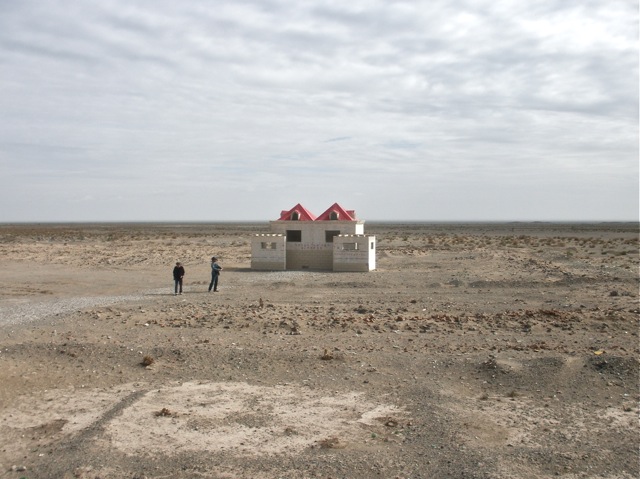
(Robert Wu)
A very poetic public toilet was found in the Taroko National Park (太魯閣國家公園) in Taiwan. It was an open-aired toilet in a lush, secluded location, built with local stones, and flushed continuously with clean mountain stream water. It was a joy to use.
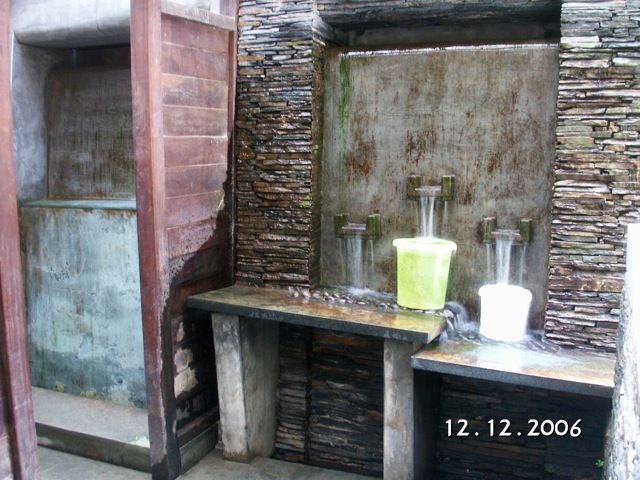
(Robert Wu)
China has been making effort to eliminate the bad reputation of its public toilets. One public toilet by the West Lake (西湖) in HangZhou (杭州) is a prime example of what China can do if it wants to. This quaint house was well designed, clean, dry, and well maintained. We rated it a 5-star public toilet.
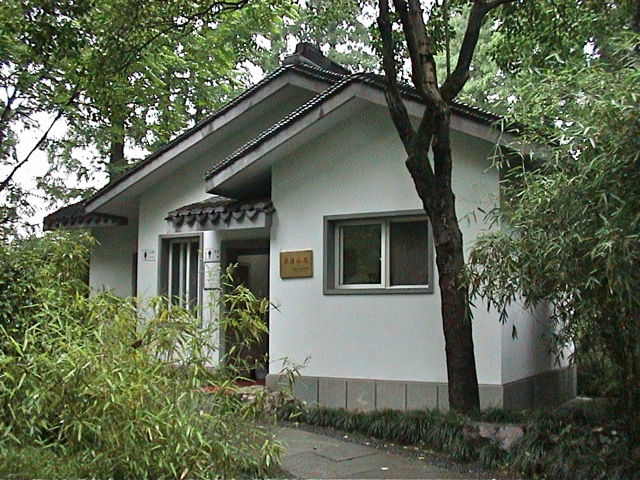
(Robert Wu)
Chinese authorities obviously agreed with us and rated it “A Best Public Toilet”.
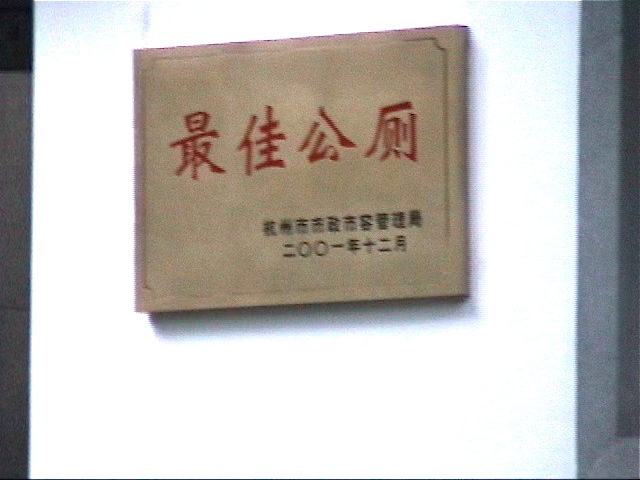
(Robert Wu)
Automation catches up in Chinese toilets. This toilet in a restaurant has an infrared sensor to flush the toilet automatically. This eliminates the souvenirs left, intentionally or not, by earlier users.
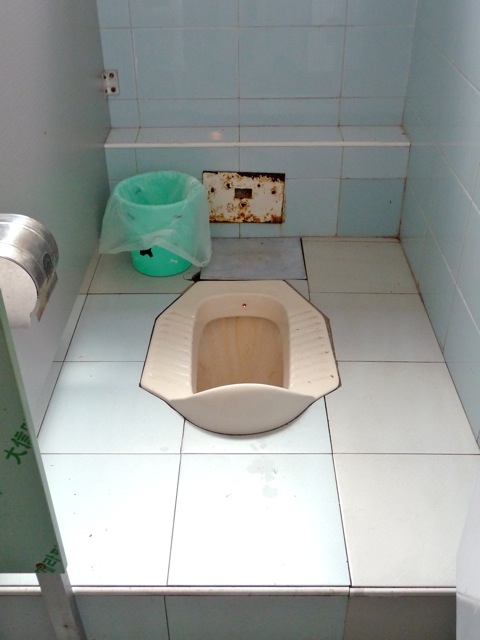
(Robert Wu)
Some countries provide water to wash the derriere after the business is done. This toilet in Egypt provides a hose called “bum gun” for that purpose. I read that some people in Thailand carry small pieces of soap for this purpose. Now, that’s really clean. After washing, some people use toilet paper to dry up before exiting the toilet.
Years ago, I rented an apartment to a Middle East man. I was dumbfounded when I found no toilet paper in his bathroom, just a small plastic bucket on the floor. I made sure I did not touch anything in his apartment.
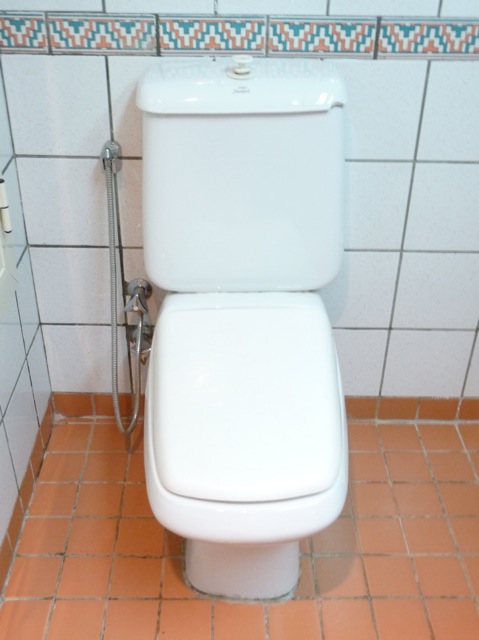
(Robert Wu)
In the famed scenic attraction of JiuZhaiGou (九寨溝), a well equipped mobile public toilet was stationed for the tourists’ use.
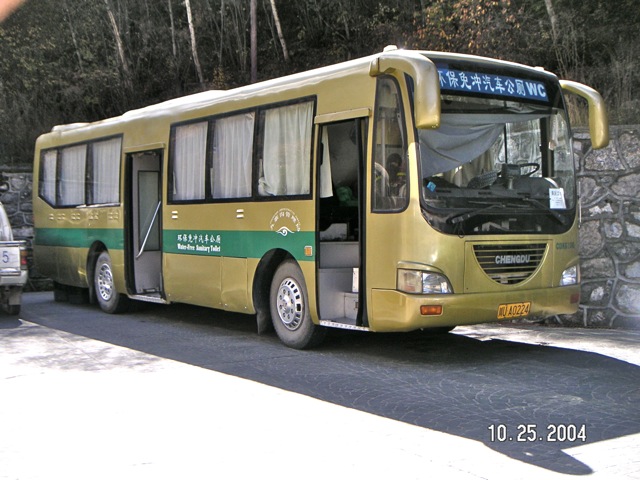
(Robert Wu)
Public toilets are sometimes designed with little consideration for modesty and privacy. Once, in Japan, women walked by us to reach ladies’ room as we men were standing in front of our urinals. This toilet in Taiwan has urinals and men using them completely open to public view. Similar design errors occur frequently in China as well.
As a general rule, public toilets in China and Hong Kong do not provide toilet papers. A pink vending machine sells it for a price.
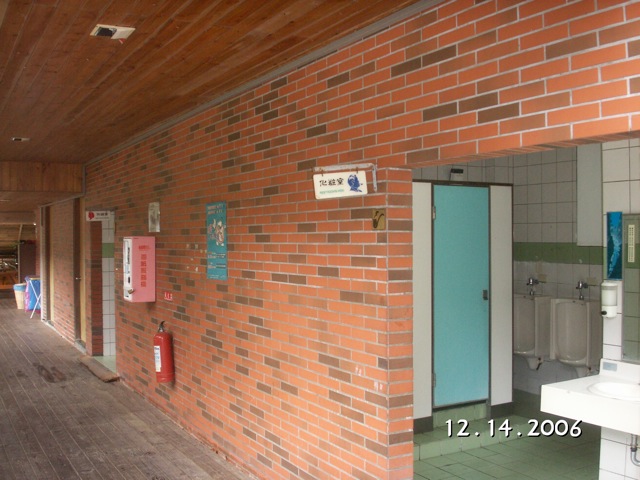
(Robert Wu)
Some hotels in China fare no better. Some mid-priced hotels in China provide one thin roll of toilet paper per room per day. If there are two occupants in one room, one person can be caught without paper.
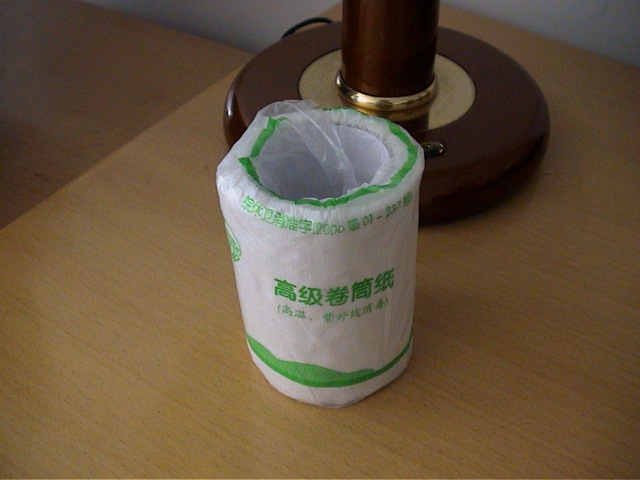
(Robert Wu)
Negligence of peoples’ privacy is not limited to Chinese and Japanese architects. One day, I looked across a street in New York and saw a man taking a shower. His shower was right next to a big window and his every movement was visible as he was very close to the frosted glass. Three stories down, a woman was also taking a shower and equally visible.
It was quite a rare occurrence to see two figures taking shower in one building. The architect of this building was negligent in placing the showers so close to the big windows.
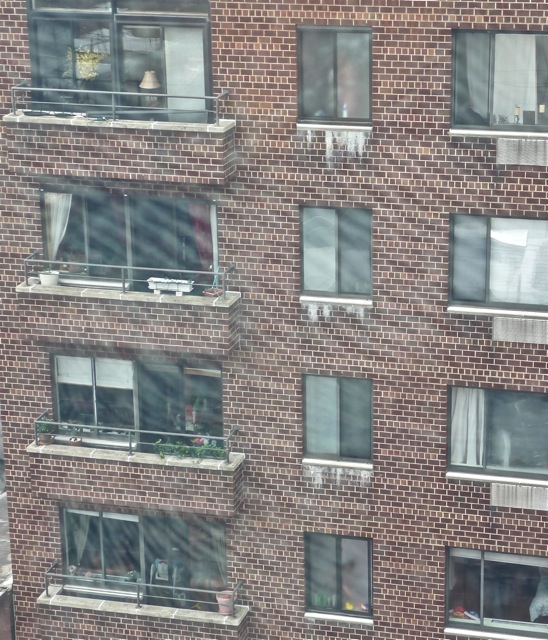
(Robert Wu)
As China modernizes, its facilities become adequately provided. Most rest stops on its super highways are clean. Also as China becomes wealthy, it is lavishing on creature comforts. The toilet in the reception area of the WuZheng (烏鎮) Disneyland-ish canal town boasts a 5-star toilet. The lounge area has flat screen TV, tea, and attendants.
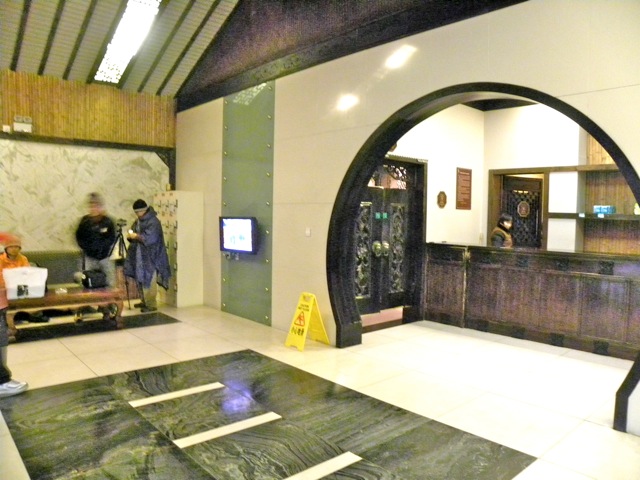
(Robert Wu)
The toilet itself is decorated lavishly with classical motifs. It is an attraction in its own right.
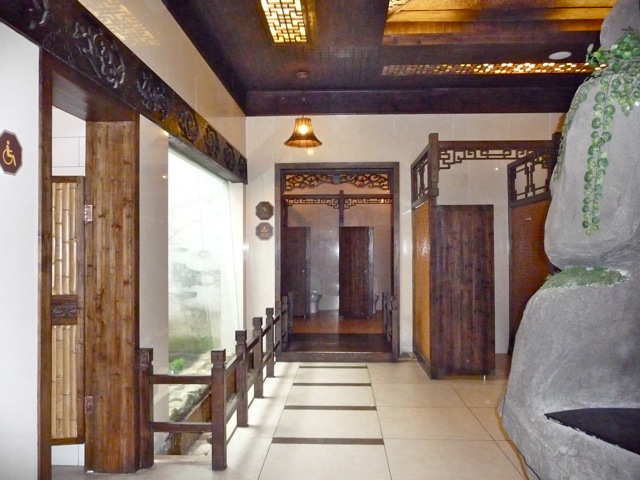
(Robert Wu)
Most Hong Kong public toilets are well designed and well maintained. This building has ladies’ room on the street level, and men’s room one story up.
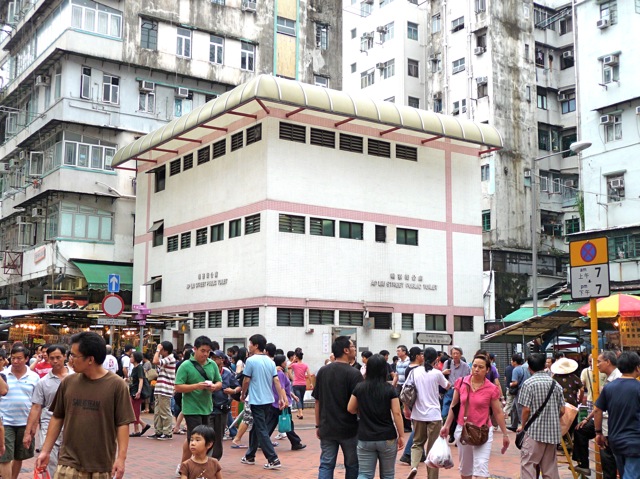
(Robert Wu)
But some Hong Kong men like to stand one foot from the urinals and wet the floor. These stainless steel slats takes care of that human short fall (the pun is intended).
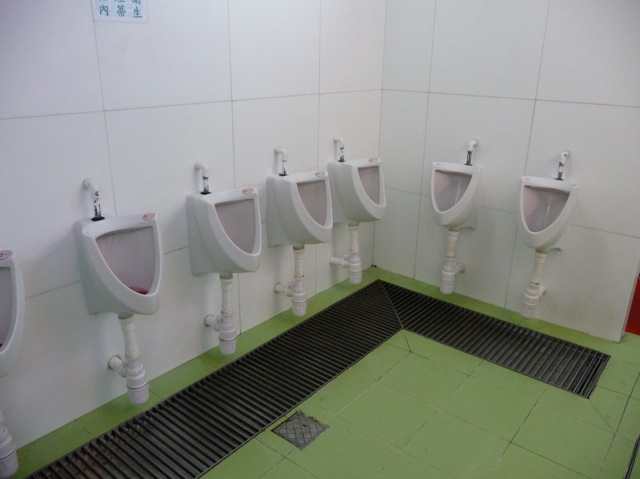
(Robert Wu)
Japanese sense of humor created a restaurant chain with the toilet theme. This Hong Kong version of the Japanese original makes clear what the customers can expect.
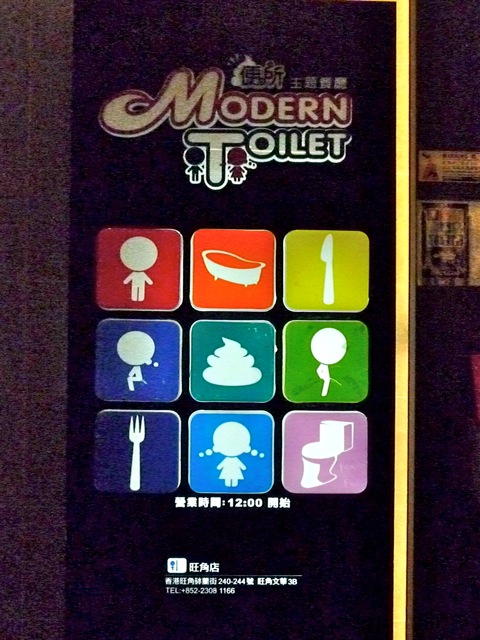
(Tammy Wu)
The furnitures are toilet fixtures, and the food are served in toilet bowl shaped utensils. The food, no doubt, are gross and marginally edible.
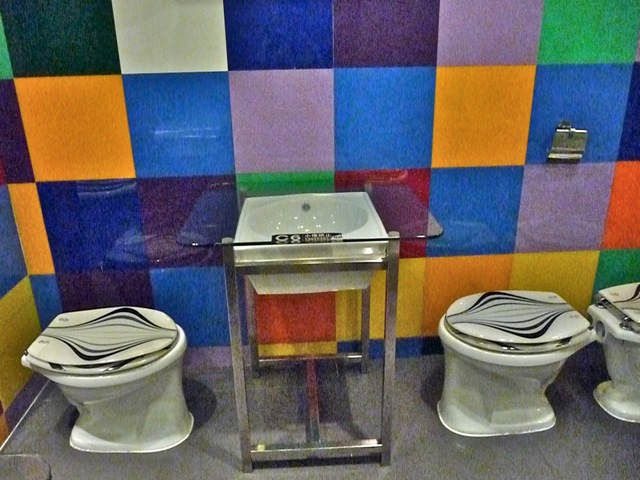
(Tammy Wu)
The lower sign makes clear it is a squat toilet. The upper sign’s “Engrish” translation is not clear what should be scoured. Ouch, that sounds painful.
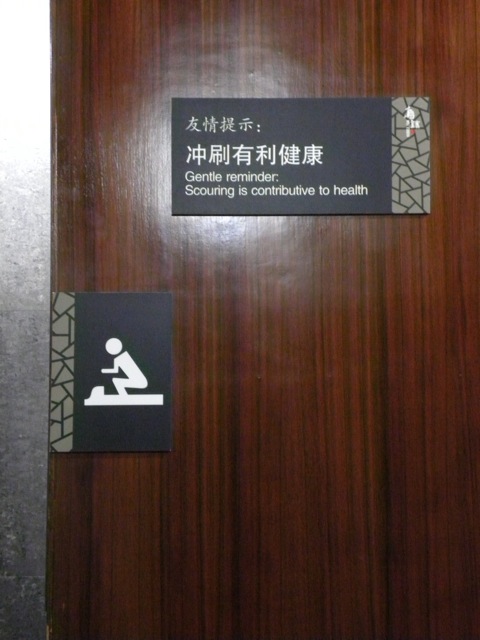
(Robert Wu)
This sign over an urinal in China has the famous Andy Lau (劉德華) shushing the urinator. Apparently he doesn’t want to hear funny sounds in the toilet. Apparently China also has a problem with long-shot urinators. The lower sign urges men to step closer to the urinals, and be civilized.
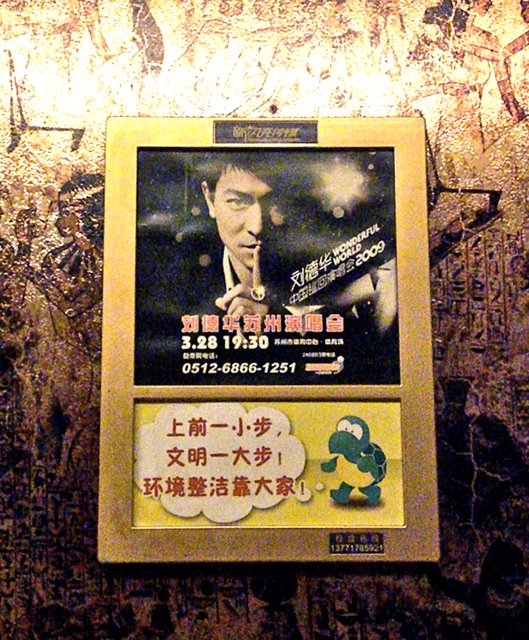
(Robert Wu)
Enough about human bodily functions. Let’s take a look at animals. This farm in California is covered completely by lighter colored sheep droppings and darker colored cattle droppings (cow pies). It was impossible to see the ground under the layer of droppings.
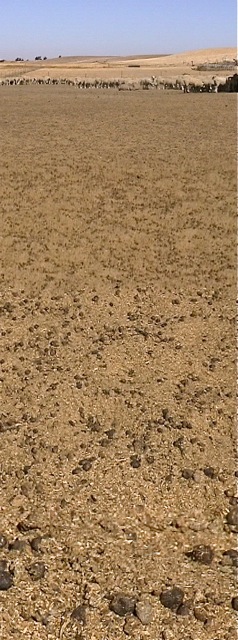
(Robert Wu)
In a sheep farm in Inner Mongolia, the shepherd carried a shovel. When she saw a sheep wandering from the flock, she used the shovel to pick up a cow pie and flung it at the offending sheep. She never missed.
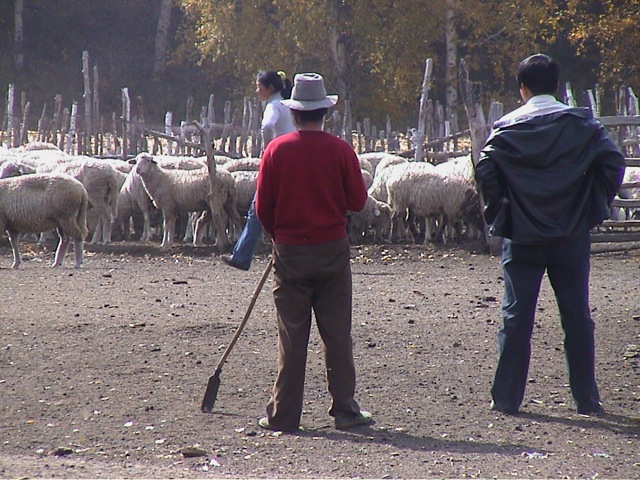
(Robert Wu)
There are lots of sacred cows in India, and they leave behind lots of cow pies. Indian farmers collect the cattle droppings, shape them into cow pies, dry them in the sun, and store them in sheds. Dried cow pies are used as fuel.
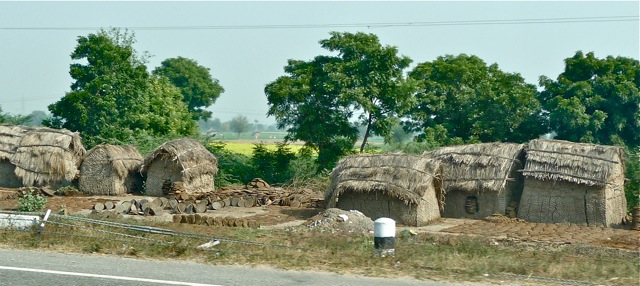
(Robert Wu)
A cart carried a mountain-load of cow pies. This should cook enough food for a thousand people.
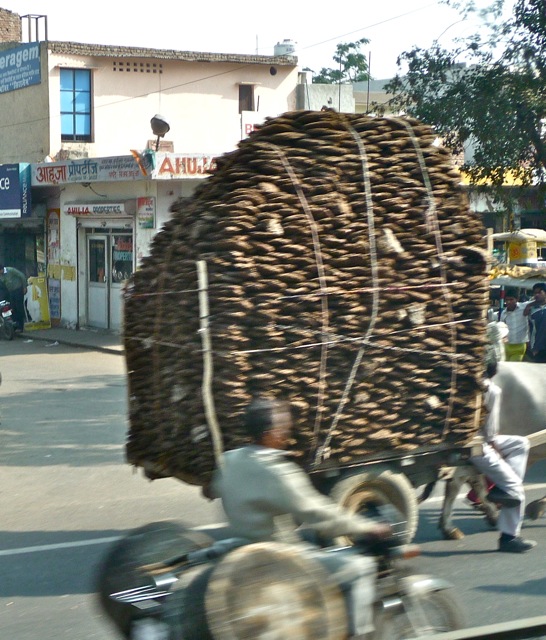
(Robert Wu)
The Masai tribes cover wattles of twigs with cattle droppings to construct houses. They were dried and did not stink, but I did not touch them nevertheless.
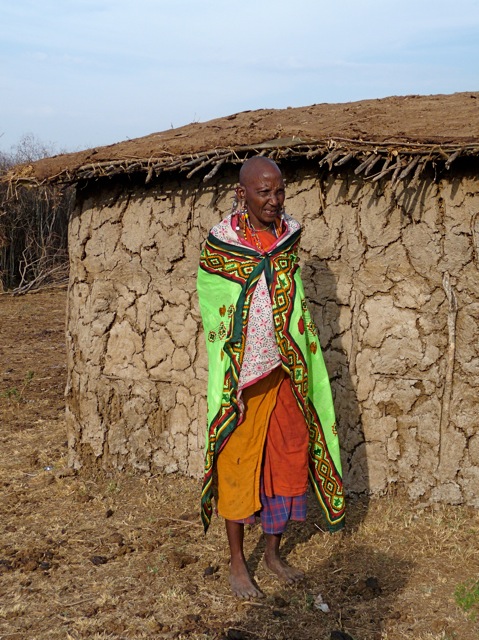
(Robert Wu)
One thing good about the sidewalks of Hong Kong is their cleanliness. The issuance of tickets for littering changed Hong Kongers littering habit, and the employment of many street sweepers keep them clean. In addition, there are seldom dog droppings on Hong Kong’s sidewalks. This is not the case in New York. One person who stepped into one too many dog droppings is mad. He declared war on dog poop.
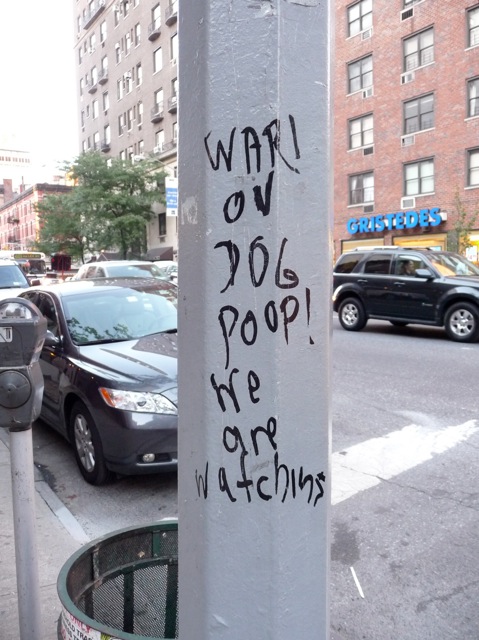
(Robert Wu)
In Japan, dogs are not the problem. It’s human. This sign on a sidewalk prohibits urination in public.
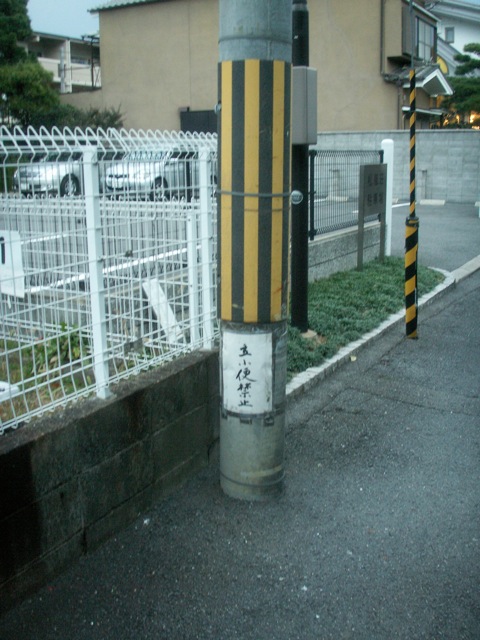
(Robert Wu)
A McDonald’s in Hong Kong was tired of cleaning pigeon droppings. It installed the statue of an owl to scare away pigeons from its awning. But the street-smart pigeons of Hong Kong are not easily fooled. To add insult to injury, a pigeon sits on top of the statue and pooped on its head.
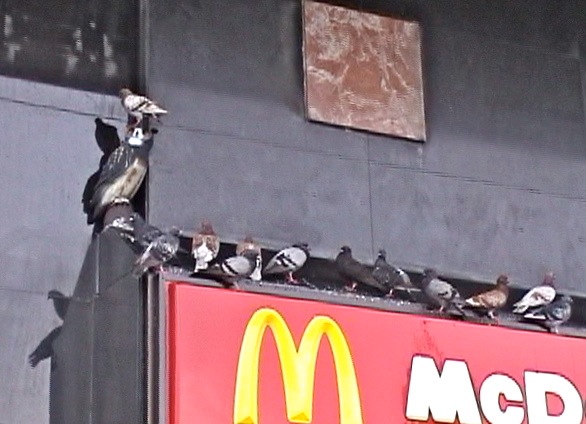
(Robert Wu)
The cutest poop story I have happened in the Panda Conservatory in ChengDu (成都). We saw a new born panda cub being cared for in an incubator. After feeding, an attendant picked it up and softly swiped its behind with a cotton ball. This simulated the licking of the cub’s anus by its mother panda. After a few minutes, the panda cub excreted some yellow liquid into a glass dish, to be weighted for record keeping.
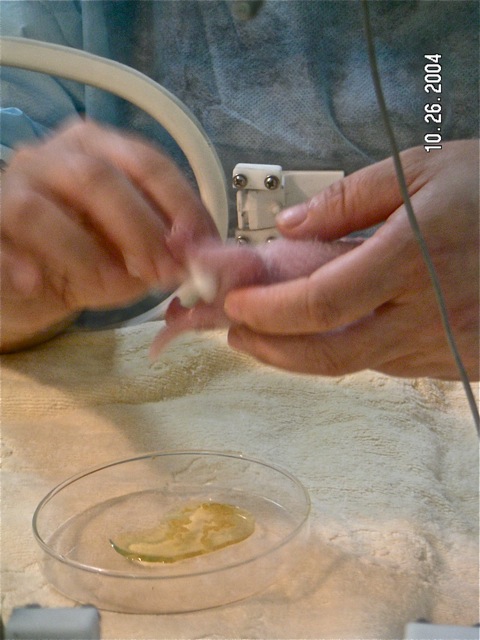
(Robert Wu)
Generations of Chinese toddlers wore crotchless pants as they crawled on floors. When the toddlers felt the urge, they would simply pee or poop without soiling the pants. This is not good for the business of Pampers.
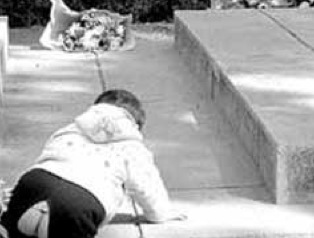
(From web)
One young Chinese man walking down the street in New York’s Chinatown emulated the Black American fad of wearing the pants low to show the entire underwear. I always have the urge to grab their pants from behind, and yank down. This young man apparently was reliving the bare-assed days of crotchless pants when he was a toddler in China.
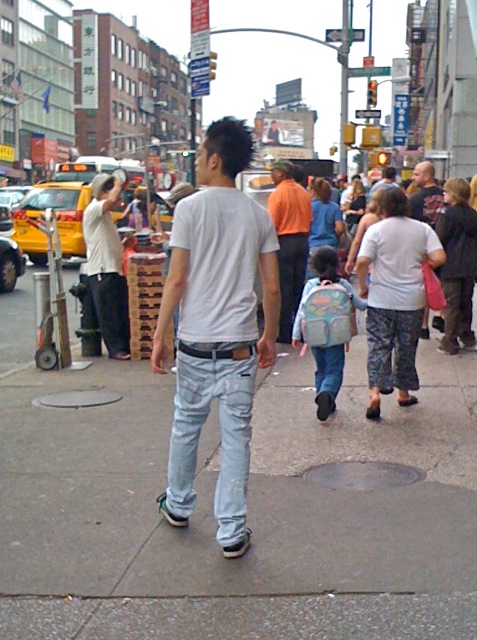
(Robert Wu)